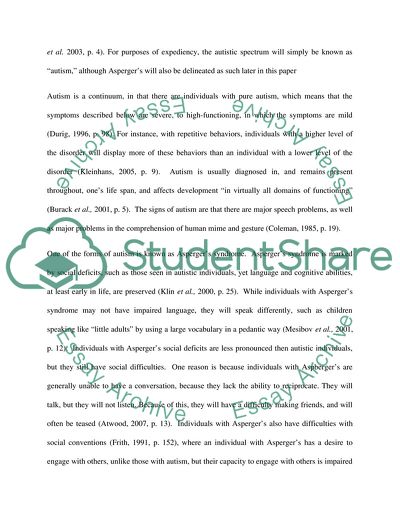Cite this document
(Children with Autistic Spectrum Disorder and Effective Ways for Their Term Paper - 1, n.d.)
Children with Autistic Spectrum Disorder and Effective Ways for Their Term Paper - 1. Retrieved from https://studentshare.org/education/1751462-children-with-autistic-spectrum-disorder-and-effective-ways-for-their-educational-practices
Children with Autistic Spectrum Disorder and Effective Ways for Their Term Paper - 1. Retrieved from https://studentshare.org/education/1751462-children-with-autistic-spectrum-disorder-and-effective-ways-for-their-educational-practices
(Children With Autistic Spectrum Disorder and Effective Ways for Their Term Paper - 1)
Children With Autistic Spectrum Disorder and Effective Ways for Their Term Paper - 1. https://studentshare.org/education/1751462-children-with-autistic-spectrum-disorder-and-effective-ways-for-their-educational-practices.
Children With Autistic Spectrum Disorder and Effective Ways for Their Term Paper - 1. https://studentshare.org/education/1751462-children-with-autistic-spectrum-disorder-and-effective-ways-for-their-educational-practices.
“Children With Autistic Spectrum Disorder and Effective Ways for Their Term Paper - 1”, n.d. https://studentshare.org/education/1751462-children-with-autistic-spectrum-disorder-and-effective-ways-for-their-educational-practices.


